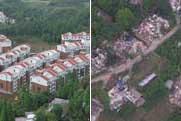China
China publishes report on Tibet´s economic, social development
WATCH VIDEO
Before the democratic reform, education was monopolized by monasteries and more than 95 percent of Tibetans were illiterate. Nowadays, illiteracy among adults under the age of 50 has fallen to below 2.4 percent.
As of the end of 2006, over 95 percent of Tibet's primary school students and 94 percent of the junior high school students had been offered bilingual courses in Tibetan and Chinese,
The total number of Tibet's education institutions reached 1,017 by the end of 2008. 6 of them are higher learning institutions.
In 2008, the per capita disposable income of Tibetan farmers and herdsmen exceeded 3,100 yuan, which has increased 18 fold compared with the 1978 level. By the end of 2007, the number of people living below the poverty line had dropped below 70,000.
As for environmental protection, the report says the government and legislature are paying increasing attention to the sustainable development of Tibet. The central government has recently ratified the Tibet ecological security protection and construction plan for the period from 2008 to 2030. In the coming decades, a new screen will be set up to defend Tibet's eco-balance.
In line with Tibet's 11th Five-year plan from 2006 to 2010, the central government will invest over 77 billion yuan to build 180 projects in Tibet. These projects will help sustain the steady economic development in Tibet.
Editor:Du Xiaodan



